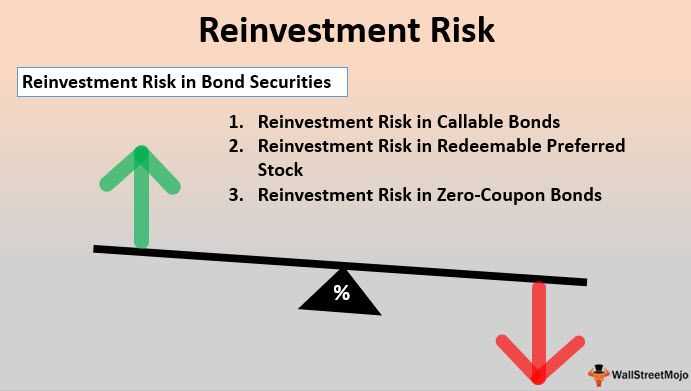What is Reinvestment Risk?
When an investment or fixed-income security matures, investors typically expect to reinvest the proceeds at a similar or higher rate of return. However, reinvestment risk arises when market conditions change and the available investment options offer lower rates of return. This can result in a decrease in the overall income or returns generated by the investment portfolio.
Causes of Reinvestment Risk

There are several factors that can contribute to reinvestment risk:
- Changes in interest rates: Fluctuations in interest rates can significantly impact the available rates of return on investments. If interest rates decrease, investors may face the challenge of finding suitable investment options that offer similar or higher returns.
- Market conditions: Economic conditions and market trends can also affect the rates of return on investments. A volatile market or economic downturn may limit the availability of high-yield investment opportunities.
- Call provisions: Some fixed-income securities, such as bonds, may have call provisions that allow the issuer to redeem the security before its maturity date. If a security is called early, investors may need to reinvest the proceeds at a lower rate of return.
Managing Reinvestment Risk

While reinvestment risk cannot be completely eliminated, there are strategies that investors can employ to manage it:
- Diversification: By diversifying their investment portfolio, investors can spread their risk across different asset classes and investment options. This can help mitigate the impact of reinvestment risk on the overall portfolio.
- Staggered maturities: Investing in securities with staggered maturities can help reduce the impact of reinvestment risk. By having investments maturing at different times, investors can take advantage of varying interest rate environments.
- Monitoring market conditions: Keeping a close eye on market conditions and interest rate movements can help investors identify potential reinvestment opportunities. This allows them to make informed decisions about when and where to reinvest their proceeds.
Effective Strategies for Managing Reinvestment Risk
Reinvestment risk is an important consideration for investors, as it can have a significant impact on the overall return of an investment portfolio. However, there are several strategies that can be employed to effectively manage reinvestment risk.
1. Diversification: One of the most effective strategies for managing reinvestment risk is diversification. By spreading investments across different asset classes, sectors, and geographic regions, investors can reduce the impact of any one investment’s reinvestment risk on the overall portfolio. Diversification helps to ensure that if one investment’s reinvestment opportunities are limited, there are other investments that can still generate returns.
4. Active Monitoring: Regularly monitoring the investment portfolio and staying informed about market conditions is essential for managing reinvestment risk. By staying proactive and making adjustments as needed, investors can take advantage of favorable reinvestment opportunities and mitigate the impact of any potential risks.
5. Professional Advice: Seeking professional advice from a financial advisor or investment manager can also be beneficial for managing reinvestment risk. These professionals have the knowledge and expertise to help investors navigate the complexities of the market and make informed decisions about reinvestment opportunities.

Emily Bibb simplifies finance through bestselling books and articles, bridging complex concepts for everyday understanding. Engaging audiences via social media, she shares insights for financial success. Active in seminars and philanthropy, Bibb aims to create a more financially informed society, driven by her passion for empowering others.
